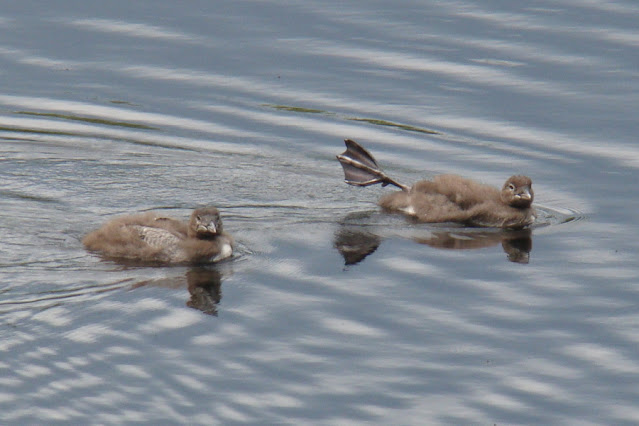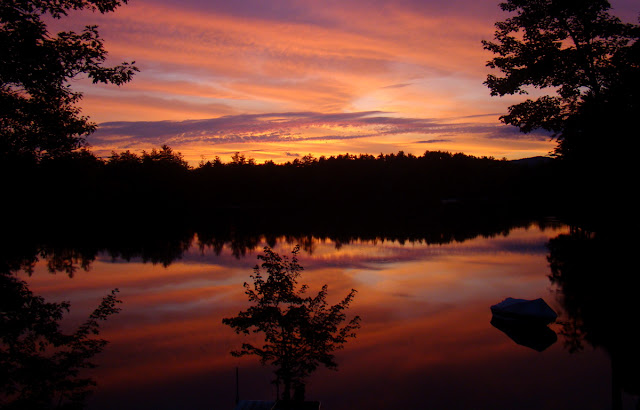All the lake levels sure are high right now, up at levels more typical of April than August with recent readings in Lake Wicwas a good foot above full lake level. This high level in midsummer can pose a problem with erosion from boat waves, so be aware of your wake when boating; many docks around the lake are just about under water.
 |
On the other hand, the high water allows kayak access to parts of the lake that aren't usually accessible in mid summer. If you explore any of the shallow marshy areas in the next week or two look for a pretty white flower with large arrow-shaped leaves near the water's edge.
 |
| Broadleaf Arrowhead (Sagittaria latifolia) |
This is called broadleaf arrowhead due to the shape of its leaves, but is also known as Indian potato as it has edible tubers that can grow over three feet long. These long roots enable the plant to survive in areas of widely variable water levels. In addition to the native Americans digging up and consuming the tubers, the entire plants are eaten by beavers and muskrats.
 |
| Large arrow-shaped leaves give this aquatic plant its common name. |
Right now the arrowheads - as well as every other other plant in the Lakes Region - doesn't need deep roots to find water. Due to the robust flow in the rivers I went looking for a waterfall hike on Tuesday and chose the Brook Trail along Shannon Brook at Castle in the Clouds, as this one mile trail passes by seven cascades of various shapes and sizes.
 |
| The last of the seven cascades on the Brook Trail. |
The water was flowing like the spring freshets.
 |
| Shannon Brook in spring-like glory. |
The Lake Wicwas Association held their annual meeting yesterday at the Wicwas Grange and it was well attended after missing last year's in-person meeting. Social time with coffee and snacks was held outdoors under sunny skies after which we enjoyed an informative presentation by Emma Erler from the UNH Extension Service about waterfront landscaping and how it can benefit water quality in our lakes. Good water flow management is especially important for heavy rain events such as we've had this summer and which are expected to become ever more frequent. I'll share a link to the presentation when it's available.
We're fortunate the heavy rains came after loon nesting season. Our two loon chicks began an important development step this week, starting to molt their light brown feathers for some adolescent attire.
 |
| Coco and Jimmy are starting their second molt. |
One chick - I expect it's Coco - is further along in this process than the other. At first I thought Jimmy was holding a wing up in the air, but later decided it was just a clump of feathers in the process of being shed.
The chicks are also displaying bright white chest feathers, especially when they reach up out of the water to stretch their wings.
They're such a handsome family.
Next time we see them the chicks may be wearing their complete teenager outfits. Until then, Jimmy waves good bye.
 |
| That foot's almost as big as Jimmy's body! |
I'll finish the week with a couple of the many summer sunsets we experienced this week.
 |
| A summer evening on the lake. |
It was great to see so many of you yesterday!




No comments:
Post a Comment